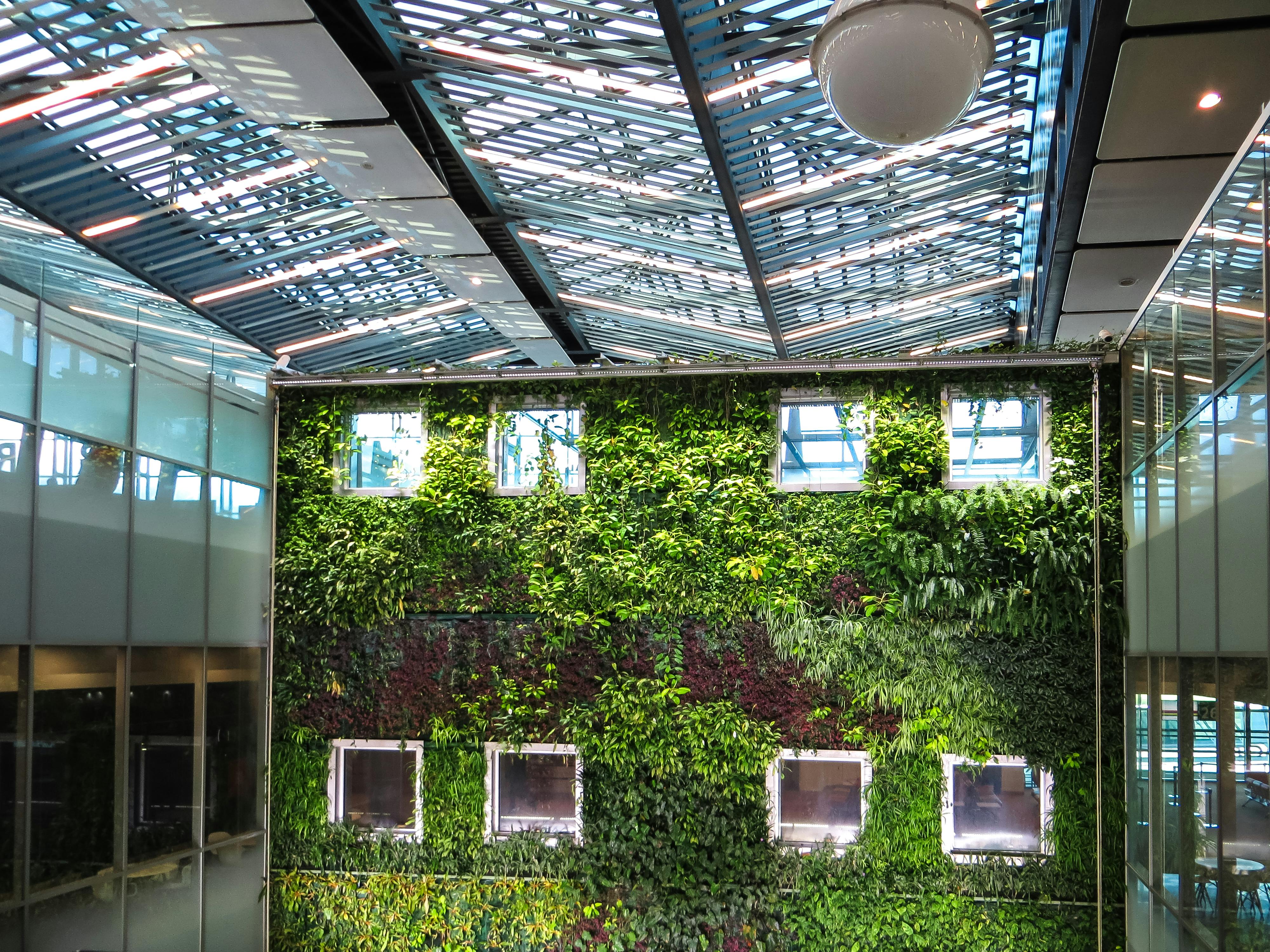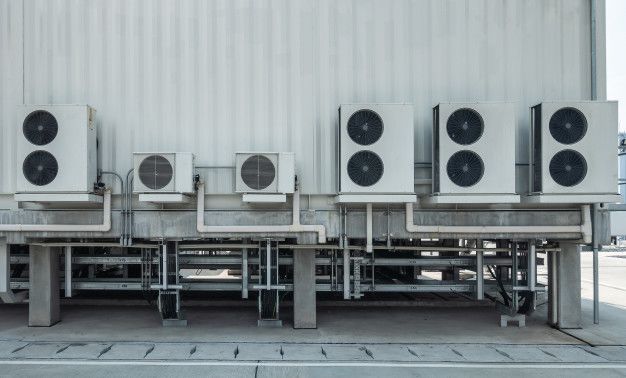4 min read
Designing for Acoustic Comfort: The Art and Science of HVAC Sound Dampening Solutions
AirFixture : Apr 16, 2024 3:08:54 PM

Living and working in comfortable environments is essential for our well-being. While temperature control plays a vital role, so does maintaining a peaceful soundscape. Here's where AirFixture comes in – our products allow for the HVAC system to operate quietly. Don’t worry about background noise of a heating unit—we have got you covered. This blog will delve into how managing noise from your Heating, Ventilation, and Air Conditioning (HVAC) system can significantly improve your indoor experience.

What is HVAC Sound Dampening?
Imagine a quiet summer night with cool air gently circulating through your home. Suddenly, a loud whirring disrupts the serenity – that's the unwelcome noise from your HVAC system. HVAC sound dampening focuses on reducing the transmission of these unwanted noises, aiming to create a more peaceful and comfortable environment.
The Importance of Quiet HVAC in Focus-Oriented Spaces

In buildings designed for concentration and focus, a noisy HVAC system can be a major disruption. Here's a look at some key examples where quiet HVAC is essential:
- Higher Education Institutions: Lecture halls, study rooms, and libraries all demand minimal noise pollution. A quiet HVAC system ensures students can hear lectures clearly, focus on studying without distraction, and avoid the annoyance of constant fan noise.
- Libraries: These are sanctuaries for quiet reading and research. Hissing vents or clanging ducts can disrupt patrons' concentration and enjoyment of the space. A well-designed HVAC system promotes a peaceful atmosphere conducive to learning and reflection.
- Conference Rooms and Meeting Spaces: Whether brainstorming ideas or conducting important presentations, a quiet environment is crucial for effective communication. Noise from HVAC systems can hinder clear conversation and lead to distractions, impacting productivity and professionalism.
- Museums and Art Galleries: These spaces are dedicated to appreciating art and artifacts in a serene atmosphere. Loud air conditioning can detract from the experience and make it difficult to appreciate the finer details of artworks. Quiet HVAC helps maintain a peaceful ambiance for visitors.
- Open-Plan Offices: While collaboration is encouraged, background noise levels can be high. A quiet HVAC system minimizes distractions and creates a more focused work environment for employees.
Benefits of Quiet HVAC Systems:
- Increased Productivity: Reduced noise improves focus and concentration, leading to increased productivity.
- Enhanced Comfort: A peaceful environment promotes a sense of well-being and comfort for building occupants.
- Improved Communication: Clear audio allows for better communication and collaboration.
- Positive Perception: A quiet building reflects a professional and well-maintained environment.
Achieving Quiet HVAC:
- Proper System Design: Selecting the right size and type of HVAC system for the space is crucial.
- Noise Reduction Techniques: Duct silencers, variable speed drives, and proper airflow management can significantly reduce noise levels.
- Regular Maintenance: Well-maintained equipment operates more efficiently and quietly.
By prioritizing quiet HVAC, these buildings can create a more focused and comfortable environment that fosters learning, productivity, and overall well-being.
How Does Sound Dampening Work?
HVAC systems generate noise in various ways. Fans, motors, and ductwork can all contribute to airborne and vibrational sounds. Sound dampening utilizes various materials and techniques to address these issues. Common methods include:
- Insulation: Utilizing ducts and equipment with sound-absorbing insulation materials like fiberglass or mineral wool traps sound waves, preventing them from traveling further.
- Acoustic Panels: Installing acoustic panels strategically within the HVAC system or surrounding areas absorbs and dampens sound waves before they reach your living space.
- Vibration Isolation: Isolating vibrating components like compressors with rubber mounts or springs minimizes the transfer of structural noise through walls and floors.
Noise Criterion and UFAD
Noise Criterion (NC) is a rating system used to describe acceptable background noise levels in different spaces. It assigns a numerical value (NC-XX) to different noise levels, with higher numbers indicating louder environments.
UFAD systems are known for their quiet operation and typically achieve a Noise Criterion rating of NC-17. This is because they function differently from traditional HVAC systems that rely on loud fans and extensive ductwork to circulate air.
Here's how UFAD systems achieve their low noise rating:
- Low-velocity air delivery: UFAD systems distribute air at a slower speed compared to traditional systems. This reduces noise caused by turbulent airflow.
- Minimal reliance on fans: Instead of large, noisy fans, UFAD systems use smaller fans or rely on pressure differentials to move air through the floor cavity. This significantly cuts down on noise generation.
An NC-17 rating indicates a very quiet environment, similar to a soft conversation in a library. This makes UFAD systems ideal for office spaces, classrooms, hospitals, and other environments where noise control is crucial for occupant comfort and focus.
Here are some additional points to consider:
- While UFAD systems generally achieve NC-17, the actual noise level can be influenced by factors like the specific system design, air flow rates, and the quality of installation.
- NC-20-25 is a recommended target for certain spaces, but there are different NC ratings suitable for various environments. For instance, a lecture hall might target NC-25 for better speech intelligibility.
Overall, Noise Criterion provides a helpful benchmark for understanding and comparing noise levels in different spaces. UFAD systems, with their NC-17 rating, offer a quiet and comfortable environment for occupants.
Reduced Stress: The Science Behind the Quiet
Our bodies react negatively to excessive noise. Chronic exposure to loud noises can elevate stress hormones like cortisol, leading to anxiety, headaches, and even high blood pressure. By reducing noise levels in your environment, sound-dampening solutions contribute to a calmer and more relaxed atmosphere, promoting overall well-being.
Beyond Aesthetics: Biophilic Design's Hidden Weapon Against Stress

As biophilic design takes center stage in the building industry, a movement focused on reconnecting occupants with nature, quiet and serenity become paramount. Mass timber construction, with its exposed wooden beams and natural aesthetic, perfectly complements this philosophy. However, noisy HVAC systems can shatter this tranquil atmosphere. Here's where Underfloor Air Distribution (UFAD) shines. UFAD's low noise profile, typically achieving a very quiet NC-17 rating, ensures a comfortable and acoustically pleasing environment – a crucial aspect for buildings designed to foster a deep connection with the natural world.
Improved Productivity: The Power of Peace
Noise pollution can significantly impact our ability to focus and be productive. Studies show that even low-level background noise can disrupt concentration and hinder cognitive performance. Sound dampening creates a quieter environment, allowing for better focus and improved task completion in workplaces and study areas, ultimately leading to increased efficiency and satisfaction.
Conclusion: Invest in Comfort
Designing for acoustic comfort is an essential aspect of creating a truly livable or workable space. By implementing sound dampening solutions in your HVAC system, you can significantly improve your indoor experience. Whether it's achieving a peaceful night's sleep, enhancing focus at work, or simply enjoying a quieter environment, AirFixture expertise can help you achieve optimal acoustic comfort. Remember, for specific sound dampening needs and personalized solutions, consulting with a professional HVAC contractor is always recommended. Let AirFixture be your partner in creating a haven of peace and comfort in your home or workplace.
Contact us today to discuss your HVAC sound-dampening needs and explore solutions that fit your unique requirements.
Sustainable Office Buildings: 7 Ways UFAD and Raised Floors Can Help the Environment
The demand for environmentally-sustainable buildings is growing exponentially. The number of LEED-registered projects in the United States rose...


